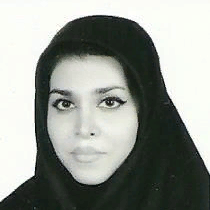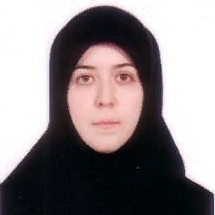International Journal of Image, Graphics and Signal Processing (IJIGSP)
IJIGSP Vol. 7, No. 12, 8 Nov. 2015
Cover page and Table of Contents: PDF (size: 739KB)
Recognition and Classification of Human Behavior in Intelligent Surveillance Systems using Hidden Markov Model
Full Text (PDF, 739KB), PP.31-38
Views: 0 Downloads: 0
Author(s)
Index Terms
Video surveillance, human action recognition, star skeleton method, feature extraction, hidden Markov model
Abstract
Nowadays, the human behavior analysis by computer vision techniques has been an interesting issue for researchers. Automatic recognition of actions in video allows automation of many otherwise manually intensive tasks such as video surveillance. Video surveillance system especially for elderly care and their behavior analysis has an important role to take care of aged, impatient or bedridden persons. In this paper, we propose a high accuracy human action classification and recognition method using hidden Markov model classifier. In our approach, first, we use star skeleton feature extraction method to extract extremities of human body silhouette to produce feature vectors as inputs of hidden Markov model classifier. Then, hidden Markov model, which is learned and used in our proposed surveillance system, classifies the investigated behaviors and detects abnormal actions with high accuracy in comparison by other abnormal detection reported in previous works. The accuracy about 94% resulted from confusion matrix approve the efficiency of the proposed method when compared with its counterparts for abnormal action detection.
Cite This Paper
Adeleh Farzad, Rahebeh Niaraki Asli,"Recognition and Classification of Human Behavior in Intelligent Surveillance Systems using Hidden Markov Model", IJIGSP, vol.7, no.12, pp.31-38, 2015. DOI: 10.5815/ijigsp.2015.12.05
Reference
[1]Teddy Ko, A Survey on Behavior Analysis in Video Surveillance for Homeland Security Applications, 37th IEEE Applied Imagery Pattern Recognition Workshop, PP. 1-8, April 2008.
[2]S. Mhatre, S. Varma, R. Nikhare, Visual Surveillance Using Absolute Difference Motion Detection, International Conference on Technologies for Sustainable Development (ICTSD), pp. 1-5, 2015.
[3]Hajer Rahali, Zied Hajaiej, Noureddine Ellouze, Robust Features for Speech Recognition using Temporal Filtering Technique in the Presence of Impulsive Noise, International Journal of Image, Graphics and Signal Processing (IJIGSP), Vol.6, No.11, pp. 17-24, October 2014.
[4]S. Rautaray, A. Agrawal, Real Time Multiple Hand Gesture Recognition System for Human Computer Interaction, International Journal of Intelligent Systems and Applications(IJISA), Vol. 4, No. 5, pp. 56-64, May 2012.
[5]J. Huang, S. Hsu1and, C. Huang, Human Upper Body Posture Recognition and Upper Limbs Motion Parameters Estimation, IEEE Signal and Information Processing Association Annual Summit and Conference, pp. 1-9, 2013.
[6]Shahrizat Shaik Mohamed, Nooritawati MdTahir, Ramli Adnan, Background Modeling and Background Subtraction Performance for Object Detection, 6th International Colloquium on Signal Processing and Its Applications (CSPA), pp.1-6, 2010.
[7]Al Mansur, Yasushi Makihara and Yasushi Yagi, Action Recognition using Dynamics Features, International Conference on Robotics and Automation, pp. 4020 - 4025, 2011.
[8]Chun-Hua Hu, Song-Lin Wo, An efficient method of human behavior recognition in smart environments, International Conference on Computer Application and System Modeling (ICCASM), Vol. 12, PP. 690-693, 2010.
[9]Xin Yuan, Xubo Yang, A Robust Human Action Recognition System using Single Camera, International Conference on Computational Intelligence and Software Engineering, pp.1-4, 2009.
[10]Chih-Chiang Chen, Jun-Wei Hsieh, Yung-Tai Hsu, Chuan-Yu Huang, Segmentation of Human Body Parts Using Deformable Triangulation, 18th International Conference on Pattern Recognition (ICPR'06), Vol.1, PP. 355 - 358, 2006.
[11]M.A. Wajeed, T. Adilakshami, Semi-supervised text classification using enhanced KNN algorithm, World Congress on Information and Communication Technologies (WICT), PP. 138-142, 2011.
[12]Sarvesh Vishwakarma, Anupam Agrawal, Framework for Human Action Recognition using Spatial Temporal based Cuboids, International Conference on Image Information Processing (ICIIP), pp. 1-6, 2011.
[13]Chen Junli, Jiao Licheng, Classification Mechanism of Support Vector Machines, 5th International Conference on Signal Processing Proceedings (WCCC-ICSP), Vol. 3, PP. 1556 - 1559, 2000.
[14]Megha D Bengalur , Human Activity Recognition using Body Pose Features and Support Vector Machine, International Conference on Advances in Computing, Communications and Informatics (ICACCI), pp. 1970 - 1975, 2013.
[15]Lawrence R. Rabiner, Fellow, A Tutorial on Hidden Markov Models and Selected Applications in Speech Recognition, Proceeding of the IEEE, Vol.77, pp. 257 - 286, 1989.
[16]Zia Moghaddam and Massimo Piccardi, Senior Member, Training Initialization of Hidden Markov Models in Human Action Recognition, IEEE Trans. on Automation Science and Engineering, Vol.11, pp. 394-508, 2014.
[17]N.K. Suryadevara , S.C. Mukhopadhyay , R. Wang , R.K. Rayudu, Forecasting the behavior of an elderly using wireless sensors data in a smart home, Engineering Applications of Artificial Intelligence (Elsevier), vol. 26, pp. 2641–2652, November 2013.
[18]N. Noury, T. Hadidi, Computer simulation of the activity of the elderly person living independently in a Health Smart Home, Computer Methods and Programs in Biomedicine, (Elsevier), vol. 108, pp. 1216–1228, December 2012.
[19]Dongping. Zhang, Jiao.Xu, Yafei.Lu, Huailiang. Peng, Dynamic Model Behavior Analysis of Small Groups, IEEE Conference Based on Article Video Wireless Communications & Signal Processing (WCSP), pp.1 – 6, 2013.
[20]Koichiro Goya, Xiaoxue Zhang, Kouki Kitayama, A Method for Automatic Detection of Crimes for Public Security by Using Motion Analysis, IEEE, Fifth International Conference on Intelligent Information Hiding and Multimedia Signal Processing, pp. 736 - 741, 2009.
[21]Zafar Ali Khan, Won Sohn, (2010), Feature Extraction and Dimensions Reduction using R transform and Principal Component Analysis for Abnormal Human Activity Recognition, 6th International Conference on Advanced Information Management and Service (IMS), pp. 253 - 258.
[22]Homa Foroughi, Hadi Sadoghi Yazdi, Hamidreza Pourreza, Malihe Javidi, An Eigenspace-Based Approach for Human Fall Detection Using Integrated Time Motion Image and Multi-class Support Vector Machine, 4th International Conference on Intelligent Computer Communication and Processing (ICCP), pp.83-90, 2008.
[23]C. Rougier, J. Meunier, A. St-Arnaud, J. Rousseau, Fall Detection from Human Shape and Motion History using Video Surveillance, 21st International Conference on Advanced Information Networking and Applications Workshops, vol.2, pp. 875 - 880, 2007.
[24]Pau-Choo Chung, Chin-De Liu, A Daily Behavior Enabled Hidden Markov Model for Human Behavior Understanding, Pattern Recognition (Elsevier), vol. 41, pp. 1572-1580, May 2008.
[25]Homa Foroughi, Mohamad Alishahi, Hamidreza Pourreza, Maryam Shahinfar, Distinguishing Fall Activities using Human Shape Characteristics, Technological Developments in Education and Automation (Springer), PP. 23-528, 2010.
[26]Junji YAMATO, Jun OHYA, Kenichiro ISHII, Recognizing Human Action in Time Sequential Images using Hidden Markov Model, IEEE Computer Society Conference on Computer Vision and Pattern Recognition, 1992.
[27]X.D. Huang, Y. Ariki, and M.A. Jack. "Hidden Markov Modes for Speech Recognition". Edmgurgh Univ. Press, 1990.

